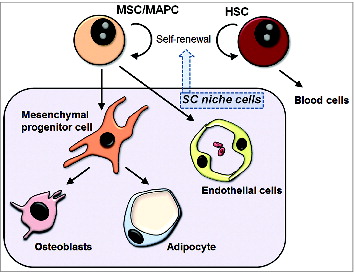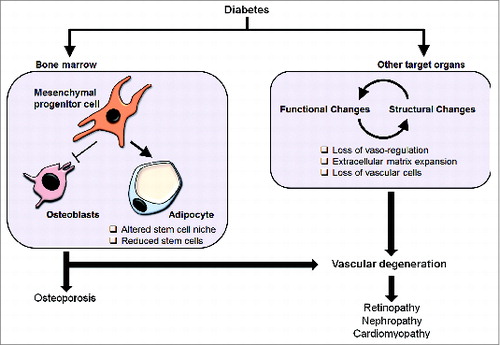Figures & data
Figure 1. Schematic illustrating bone marrow niche components. Bone marrow contains at least two different stem cell types: hematopoietic stem cells and mesenchymal stem cells. Self-renewal and differentiation activity of these stem cells is regulated by the surrounding microenvironment including cell types at various differentiation states. These niche cells include endothelial cells, osteoblasts, adipocytes and mesenchymal progenitor cells (cells restricted to the mesenchymal lineage). HSC, hematopoietic stem cells; MAPC, multipotential adult progenitor cell; MSC, mesenchymal/multipotential stem cell; SC, stem cell.

Figure 2. Effect of diabetes in target organs systems. Diabetes leads to structural and functional changes in target organs resulting in loss of blood vessel integrity and vasoregulation. Continued damage to blood vessels leads to a reduction in blood flow to target organs and loss of vascular cells. Vessel degeneration and ischemia play critical roles in the development of secondary complications of diabetes including retinopathy, nephropathy, and cardiomyopathy. In the bone marrow, diabetes changes the cellular composition by increasing adipogenesis and reducing osteoblastogenesis. These are believed to alter the stem cell niche resulting in stem cell dysfunction and depletion. The end result would be impaired repair and regeneration of vasculature in target organs of secondary complications.

